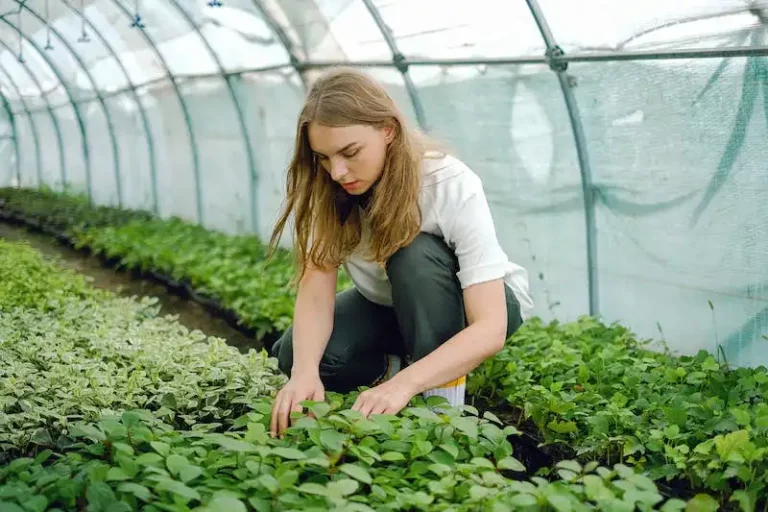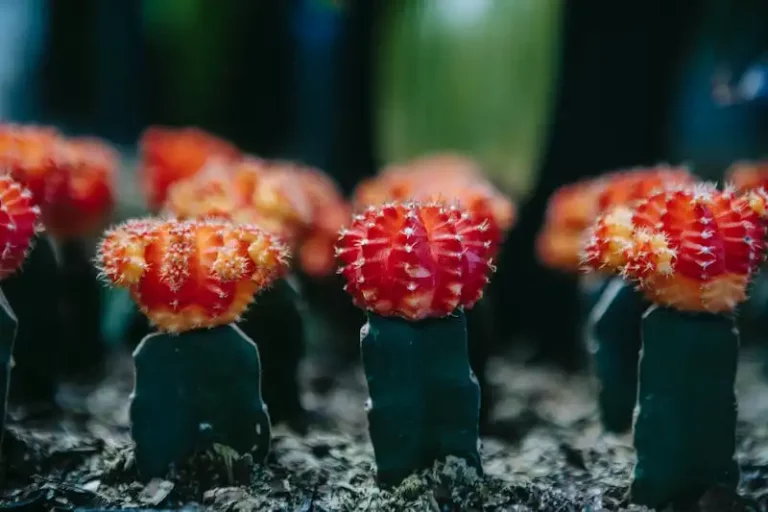If you’re a garden enthusiast, growing and caring for agastache could be a great bonus for your garden. Agastache, also known as hyssops, is a plant that offers a guarantee of beautiful flowers and a variety of benefits. With its fragrant and attractive pink, white, or purple flowers, agastache can bring a touch of color and beauty to your garden.
There are various types of agastache, such as Alabama agastache or the relative of mint. It can be grown in different ways, including from seeds or by rooting a cutting from an existing plant. Some gardeners prefer to sow the seeds directly in the soil, while others choose to start with planting in a pot and then transplanting the young plant later.
When it comes to watering, be smart about it! Agastache is a heat-loving plant that does better when the soil is left to dry out a bit between watering. It is also a great plant to attract beneficial insects, such as bees and butterflies, to your garden. By taking care of agastache, you’re not only ensuring a better-looking garden but also contributing to the ecosystem.
If you’re wondering about the germinating process, it’s good to know that agastache seeds require specific conditions to grow successfully. March is the best time to sow the seeds, and it is recommended to test the germination rate before selecting the seeds for planting. Once you’ve chosen the seeds, prepare the soil by adding compost and make sure it is rich in organic matter.
Once you have completed the planting process, be patient! Agastache typically takes about 4 to 5 days to germinate and start growing. Once the plants start to flower, you can harvest the flowers by snipping them off at the base. Agastache is known for its healing properties, so you can use the flowers to make teas or essential oils.
Overall, growing and caring for agastache can be a rewarding experience. Whether you’re a novice gardener or have a green thumb, this plant offers a beautiful addition to any garden. So, why wait? Get started on growing your agastache plants today and enjoy the beauty and fragrance they bring to your outdoor space!
How To Propagate Agastache: 3 Bonus Methods
If you have successfully grown Agastache in your garden and decide that you want more of these beautiful plants, there are several methods you can use to propagate them. While no method can guarantee a 100% success rate, trying out different methods can increase your chances of successfully propagating Agastache.
1. Watering Method: One easy method is to use the watering method, also known as “Legault method.” In this method, you will need a pot filled with well-draining soil. In the morning, before the heat of the day, water the pot thoroughly. Afterward, insert the plant’s stem into the soil. Make sure the soil is damp, but not soggy. This method encourages the development of new roots.
2. Sand Method: Another popular method is the sand method. In this method, you will need to select a container filled with sand. Insert the Agastache cuttings into the sand, making sure they are firmly planted. Water the container regularly, making sure the sand stays moist. This method is great for rooting new shoots.
3. Seed Method: If you want to grow Agastache from seed, you can use the seed method. Start by testing the seeds for viability. Place the seeds on a damp paper towel and put them in a plastic bag. After 6 to 10 days, check if the seeds have germinated. Once the seeds have sprouted, you can plant them directly into your garden or in pots. This method is suitable for native Agastache varieties.
In conclusion, there are several ways to propagate Agastache, and each method has its own advantages. By following the steps outlined above, you can increase your chances of successfully growing more of these beautiful flowering plants. Whether you choose to try the watering method, sand method, or seed method, make sure to provide the right care and prepare your plants accordingly. Happy gardening!
Click here to read the complete article with 6 methods to propagate Agastache.
How To Propagate Agastache Successfully
There are several methods to propagate Agastache, also known as the hummingbird mint or hyssop. These plants are highly attractive to pollinators, so being able to propagate them ensures a steady supply for your garden.
One method of propagating Agastache is by germinating the seeds. Agastache seeds have a tough outer coating, so to improve germination rates, it is recommended to scarify the seeds by lightly rubbing them with sandpaper or soaking them in hot water for a few hours before planting. Sow the seeds in well-drained soil or start them indoors in a container. Ensure the soil is kept moist, but not overly saturated, to encourage healthy growth.
Another way to propagate Agastache is through division. This method is especially useful for those who already have an established Agastache plant. In the early spring, select a healthy Agastache plant and carefully dig around its base. Divide the plant into multiple sections, making sure each division has a good amount of roots attached. Replant the divisions in a well-drained soil, and water generously after planting to help the roots establish.
Semi-hardwood cuttings can also be used to propagate Agastache. In late summer or early fall, take 4-5 inch-long shoots from a healthy Agastache plant. Remove the lower leaves, leaving only a few at the top. Dip the cut end in a rooting hormone, and then plant the cutting in a well-draining soil mix, keeping it moist until rooting occurs.
If you are looking for a quicker way to propagate Agastache, you can also harvest and plant the seedlings that sprout around the original plant. Agastache has a tendency to self-seed, and these seedlings can be carefully removed and planted elsewhere in your garden.
When propagating Agastache plants, it is important to know that they are native to North and Central America. They prefer full sun but can tolerate some shade. Agastache plants also prefer well-drained soil, so make sure to plant them in an area where water doesn’t accumulate. Additionally, they are known for their fragrant flowers that attract insects, so planting them near a garden path or sitting area can be a bonus.
To ensure the success of your propagation attempts, it’s always a good idea to test the soil before planting. Agastache prefers a slightly acidic to neutral pH level. If the soil is too alkaline, you can amend it by adding organic matter or applying a soil acidifier.
By following these propagation methods, you can quickly and easily propagate Agastache plants to enjoy their beautiful flowers and attract beneficial insects to your garden.
Method 1: Seeds
If you’re a smart gardener, you know that growing agastache from seeds can be a rewarding experience. Here are 3 steps to propagate agastache from seeds:
| Step | Action |
|---|---|
| 1 | Sow the seeds directly in the garden in early spring, when the soil has settled and the risk of frost has passed. Choose a sunny location with well-drained soil. |
| 2 | Prepare the soil by loosening it and removing any weeds or grass. Agastache seeds require light to germinate, so they should be sown on the soil surface and lightly pressed into the soil. Keep the soil moist until the seeds sprout. |
| 3 | Care for the seedlings by watering them regularly and providing plenty of sunlight. As they grow, thin them out to ensure even spacing. Agastache will usually bloom in their second year of growth. |
Seeds can be a great option for propagating agastache, as it allows you to grow a large number of plants in a cost-effective way. Just follow these steps to start growing your own vibrant agastache garden!
It’s worth noting that some types of agastache may have specific requirements when it comes to sowing seeds. For example, Agastache rugosa seeds should be stratified or scarified before sowing to break dormancy. If you’re unsure about the requirements for a specific type of agastache, it’s always a good idea to do some research or consult with a gardening expert.
Growing agastache from seeds will not only provide you with beautiful and aromatic plants in your garden but will also attract pollinators, such as bees and butterflies, to your outdoor space. This can help ensure a healthy and thriving ecosystem in your garden.
In conclusion, propagating agastache from seeds is a relatively easy and rewarding method, especially if you follow the steps outlined in this article. So go ahead and sow some agastache seeds in your garden, and you’ll soon be enjoying the vivid blooms and delightful fragrance of these mint family members.
Method 2: Cuttings
If you want to grow agastache plants without having to sow seeds or divide existing plants, you can take cuttings instead. This method is a quick and effective way to propagate multiple plants from a single parent plant. Here is how to do it:
| Materials needed: | |
|---|---|
| 1. Sharp, clean pair of scissors or pruning shears | 4. Container or pot with well-draining soil mix |
| 2. Water | 5. Rooting hormone (optional) |
| 3. Plastic bag or greenhouse cover (optional) | 6. Mist bottle or spray bottle |
Step 1: Choose a healthy plant that has been growing well in your garden. It is best to take cuttings in early morning, when the plant is fully hydrated.
Step 2: Use your scissors or pruning shears to make a clean cut, just below a leaf node. This is where the new roots will emerge from.
Step 3: Take several cuttings, about 4-6 inches long, from different parts of the plant. This will increase your chances of success.
Step 4: Remove the lower leaves from each cutting, leaving only a few leaves at the top. This will help prevent excessive moisture loss.
Step 5: Dip the cut end of each cutting into rooting hormone, if desired. This can help encourage better root growth.
Step 6: Plant the cuttings into a container or pot filled with well-draining soil mix. Make sure to water the soil right after planting to help settle it around the cuttings.
Step 7: Place the container in a location that receives bright, indirect light. Avoid exposing the cuttings to direct sunlight or extreme heat.
Step 8: To maintain high humidity around the cuttings, you can cover the container with a plastic bag or use a greenhouse cover. This will help prevent excessive moisture loss.
Step 9: Mist the cuttings regularly with water using a mist bottle or spray bottle. This will help keep the leaves hydrated.
Step 10: After a few weeks, the cuttings should start developing roots. You can gently pull on the cuttings to test if they have rooted. If there is resistance, it means roots have formed.
Step 11: Once the cuttings have rooted, you can gradually acclimate them to outdoor conditions by taking off the covering for a few hours each day. After a week or two, they will be ready to be planted in the garden.
In conclusion, taking cuttings from agastache plants is an effective method to propagate new plants. It is a relatively simple process that allows you to grow multiple plants with the same desirable properties as the parent plant. By following the steps outlined above, you can ensure successful rooting and the growth of healthy new agastache plants.



